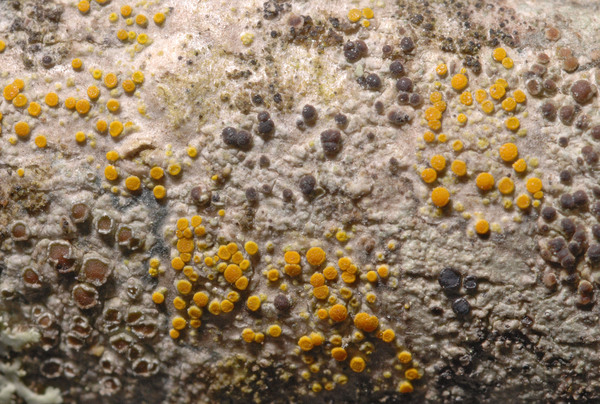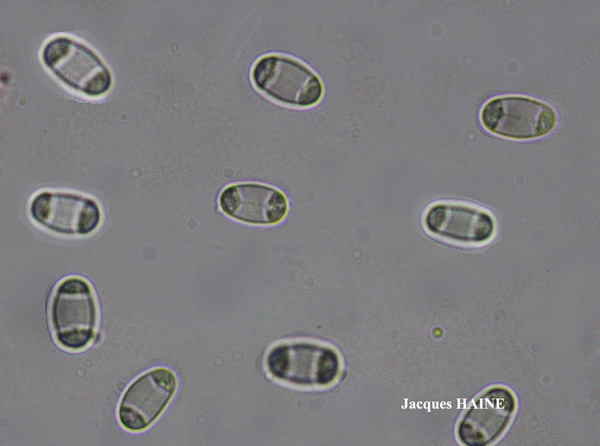Athallia cerinella (Nyl.) Arup, Frödén & Søchting
in Arup & al., Nord. J. Bot., 31: 36, 2013. Basionym: Lecanora cerinella Nyl. - Bull. Soc. Bot. France, 13: 370, 1866.
Synonyms: Callopisma cerinellum (Nyl.) Walt. Watson; Caloplaca cerinella (Nyl.) Flagey; Caloplaca perfida Malme; Candelariella cerinella (Nyl.) Mig. non Zahlbr.; Placodium cerinellum (Nyl.) Vain.
Distribution: N - VG, Frl (Bernini & al. 2010), Ven (Nascimbene & Marini 2010), TAA (De Benetti & Caniglia 1993, Nascimbene & al. 2007b, 2014, 2022, Nascimbene 2014), Lomb (Arosio & al. 2000, 2003, Gheza & al. 2022), Piem (Arosio & al. 1998, Matteucci & al. 2010, Giordani & Malaspina 2016), Emil (Nimis & al. 1996, Sallese 2003, Morselli & Regazzi 2006, Benesperi 2009, Fariselli & al. 2020, Brackel 2025). C - Tosc (Putortì & al. 1999c, Loppi & al. 2002, Frati & al. 2007, Paoli & al. 2012b, 2013, Frati & Brunialti 2023), Marc (Gasparo & al. 1989, Nimis & Tretiach 1999, Frati & Brunialti 2006), Umb (Ravera 1998, Ravera & al. 2006, Brackel 2015), Laz (Bartoli & al. 1997b, Ravera & al. 1999, Munzi & al. 2007, Ravera & Genovesi 2008), Abr (Olivieri & Pacioni 1996, Olivieri & al. 1997, 1997b, Loppi & al. 1999, Nimis & Tretiach 1999, Caporale & al. 2016), Mol (Nimis & Tretiach 1999, Caporale & al. 2008, Paoli & al. 2011, 2015, Caporale & Ravera 2020), Sar (Zedda 2002, Rizzi & al. 2011, Cossu 2013, Neuwirth 2018, Di Nuzzo & al. 2022). S - Camp (Aprile & al. 2002, 2003, 2003b, Nimis & Tretiach 2004, Garofalo & al. 2010, Catalano & al. 2012, 2016, Brunialti & al. 2013, Ravera & Brunialti 2013), Pugl (Nimis & Tretiach 1999, Brackel 2011, Gianfreda & Matino 2020), Bas (Nimis & Tretiach 1999, Paoli & al. 2006, Potenza & al. 2010), Cal (Brackel & Puntillo 2016), Si (Ravera & al. 2023b).
Description: Thallus crustose, grey-white, thin, continuous, becoming waxy and pruinose in the herbarium. Cortex absent or weakly developed and indistinctly paraplectenchymatous. Apothecia zeorine/biatorine, frequent, 0.3-0.5(-0.8) mm across, often crowded, round to slightly crenulate, at first immersed, then sessile, with an initially concave, then mostly flat to finally convex, yellow orange to orange disc, a concolorous or slightly paler, finally excluded proper margin, and sometimes a poorly developed, whitish thalline margin enveloping the sides of young apothecia. Thalline exciple often suppressed in mature apothecia, up to 60 µm wide; proper exciple 15–30 µm wide, of radiating, thick-walled hyphae with long and narrow to short ellipsoid cells measuring 4-15 x 1-4 µm; epithecium orange, K+ purple-red, C-; hymenium colourless, 70-90 μm high; paraphyses simple or sometimes branched in upper part, lax, 2-2.5 μm thick at mid-level, the apical cells often swollen, to c. 4.5 μm wide, hypotheciuim colourless, 40-65 µm high. Asci 12-16-spored, cylindrical-clavate, functionally unitunicate, apically thickened with a broad internal beak, the inner part of apex and external cap I+ blue, Teloschistes-type. Ascospores 2-celled, polarilocular, hyaline, biseriate, ellipsoid, (7.5-)9-13(-14) x (5-)6-7 µm, the equatorial thickening (“septum”) 3-5 µm (c. 1/4-1/2 of spore length). Pycnidia orange-red, often slightly erumpent. Conidia cylindrical with rounded ends, straight, 3-4 x c. 1 μm. Photobiont chlorococcoid. Spot tests: thallus K-, C-, KC-, P-; apothecia K+ purple-red, C-. Chemistry: thallus without lichen substances; apothecia with parietin (major), fallacinal, emodin, teloschistin and parietinic acid (minor), corresponding with chemosyndrome A of Søchting (1997).Note: a temperate species found on base- or nutrient-rich bark (e.g. very common on Sambucus or on Juglans in open habitats), with optimum in the submediterranean belt. See also note on A. cerinelloides.
Growth form: Crustose
Substrata: bark
Photobiont: green algae other than Trentepohlia
Reproductive strategy: mainly sexual
Commonnes-rarity: (info)
Alpine belt: absent
Subalpine belt: absent
Oromediterranean belt: absent
Montane belt: rare
Submediterranean belt: rather common
Padanian area: rare
Humid submediterranean belt: common
Humid mediterranean belt: rather rare
Dry mediterranean belt: rare

Predictive model
Herbarium samples
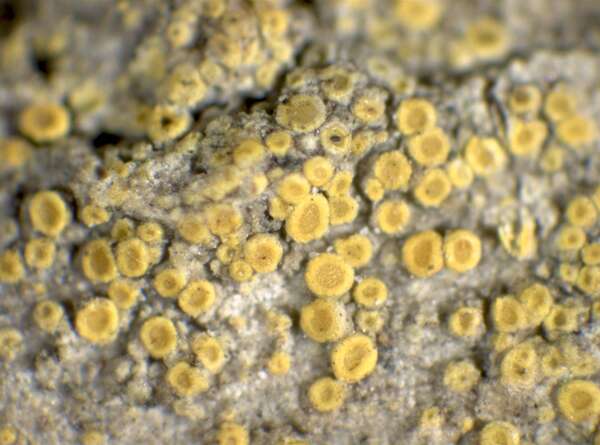

P.L. Nimis; Owner: Department of Life Sciences, University of Trieste
Herbarium: TSB (7375)
2001/12/18
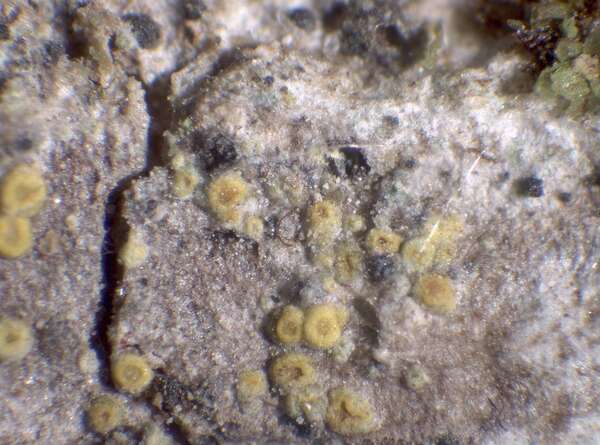

P.L. Nimis; Owner: Department of Life Sciences, University of Trieste
Herbarium: TSB (35088)
2002/06/08
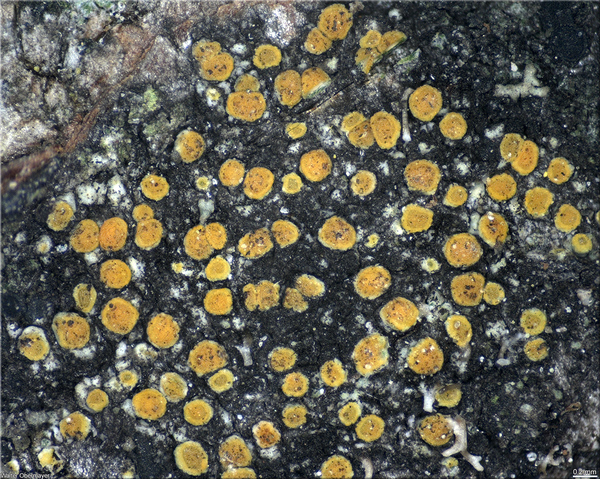
Walter Obermayer CC BY-SA 4.0 - Source: Lichens of Noricum - http://lichens-of-noricum.uni-graz.at/
Austria, Schoeckl, on Corylus
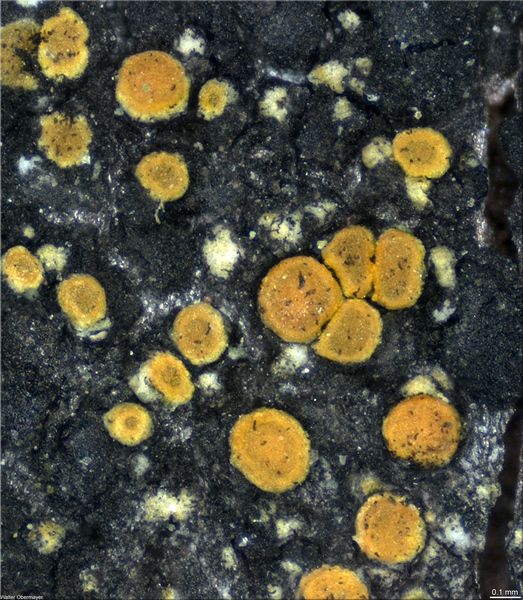
Walter Obermayer CC BY-SA 4.0 - Source: Lichens of Noricum - http://lichens-of-noricum.uni-graz.at/
Austria, Schoeckl, on Corylus
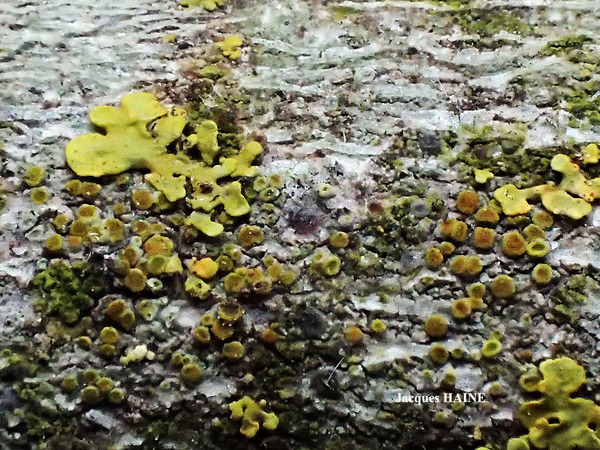
Jacques Haine - Source: http://www.lichensmaritimes.org/index.php?task=fiche&lichen=1266&lang=en
Belgium, Aiseau
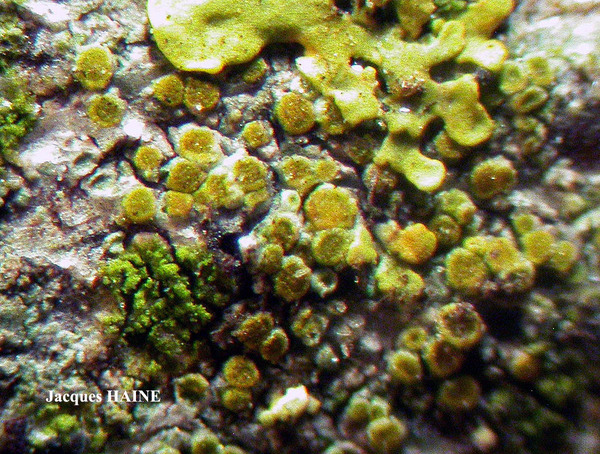
Jacques Haine - Source: http://www.lichensmaritimes.org/index.php?task=fiche&lichen=1266&lang=en
Belgium, Aiseau

Jacques Haine - Source: http://www.lichensmaritimes.org/index.php?task=fiche&lichen=1266&lang=en
Belgium, Aiseau
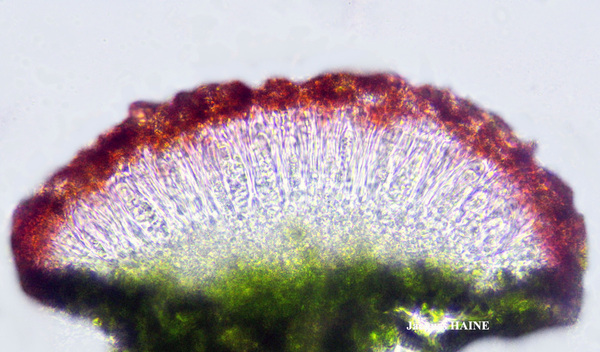
Jacques Haine - Source: http://www.lichensmaritimes.org/index.php?task=fiche&lichen=1266&lang=en
Belgium, Aiseau
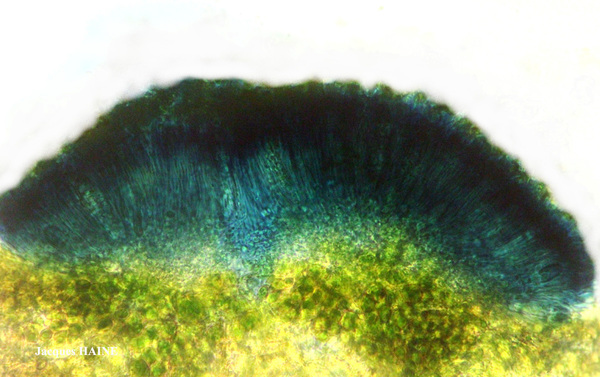
Jacques Haine - Source: http://www.lichensmaritimes.org/index.php?task=fiche&lichen=1266&lang=en
Belgium, Aiseau
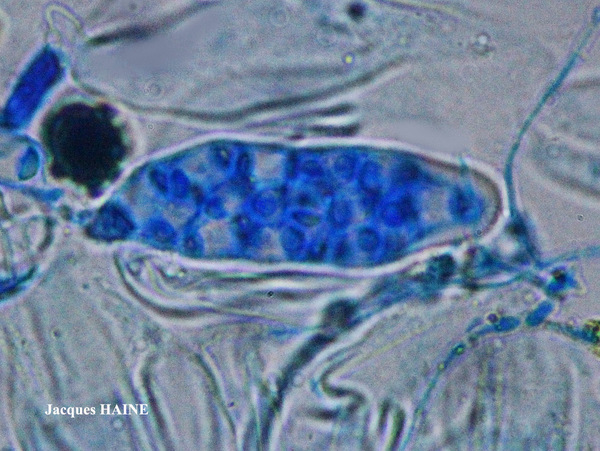
Jacques Haine - Source: http://www.lichensmaritimes.org/index.php?task=fiche&lichen=1266&lang=en
Belgium, Aiseau

Jacques Haine - Source: http://www.lichensmaritimes.org/index.php?task=fiche&lichen=1266&lang=en
Belgium, Aiseau
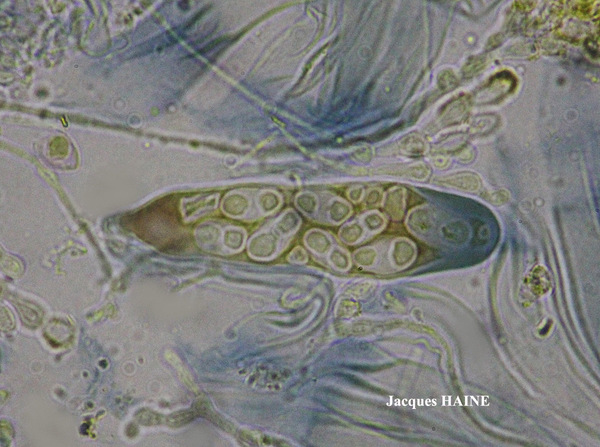
Jacques Haine - Source: http://www.lichensmaritimes.org/index.php?task=fiche&lichen=1266&lang=en
Belgium, Aiseau
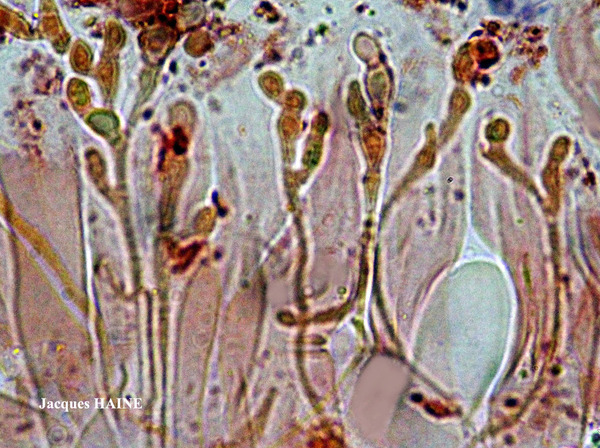
Jacques Haine - Source: http://www.lichensmaritimes.org/index.php?task=fiche&lichen=1266&lang=en
Belgium, Aiseau
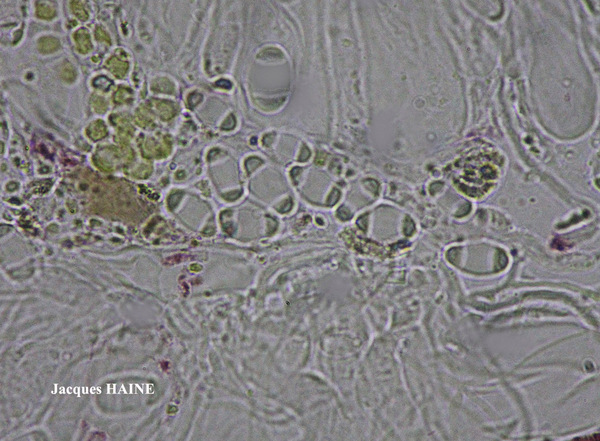
Jacques Haine - Source: http://www.lichensmaritimes.org/index.php?task=fiche&lichen=1266&lang=en
Belgium, Aiseau
Growth form: Crustose
Substrata: bark
Photobiont: green algae other than Trentepohlia
Reproductive strategy: mainly sexual
Commonnes-rarity: (info)
Alpine belt: absent
Subalpine belt: absent
Oromediterranean belt: absent
Montane belt: rare
Submediterranean belt: rather common
Padanian area: rare
Humid submediterranean belt: common
Humid mediterranean belt: rather rare
Dry mediterranean belt: rare

Predictive model
| Herbarium samples |


P.L. Nimis; Owner: Department of Life Sciences, University of Trieste
Herbarium: TSB (7375)
2001/12/18


P.L. Nimis; Owner: Department of Life Sciences, University of Trieste
Herbarium: TSB (35088)
2002/06/08

Walter Obermayer CC BY-SA 4.0 - Source: Lichens of Noricum - http://lichens-of-noricum.uni-graz.at/
Austria, Schoeckl, on Corylus

Walter Obermayer CC BY-SA 4.0 - Source: Lichens of Noricum - http://lichens-of-noricum.uni-graz.at/
Austria, Schoeckl, on Corylus

Jacques Haine - Source: http://www.lichensmaritimes.org/index.php?task=fiche&lichen=1266&lang=en
Belgium, Aiseau

Jacques Haine - Source: http://www.lichensmaritimes.org/index.php?task=fiche&lichen=1266&lang=en
Belgium, Aiseau

Jacques Haine - Source: http://www.lichensmaritimes.org/index.php?task=fiche&lichen=1266&lang=en
Belgium, Aiseau

Jacques Haine - Source: http://www.lichensmaritimes.org/index.php?task=fiche&lichen=1266&lang=en
Belgium, Aiseau

Jacques Haine - Source: http://www.lichensmaritimes.org/index.php?task=fiche&lichen=1266&lang=en
Belgium, Aiseau

Jacques Haine - Source: http://www.lichensmaritimes.org/index.php?task=fiche&lichen=1266&lang=en
Belgium, Aiseau

Jacques Haine - Source: http://www.lichensmaritimes.org/index.php?task=fiche&lichen=1266&lang=en
Belgium, Aiseau

Jacques Haine - Source: http://www.lichensmaritimes.org/index.php?task=fiche&lichen=1266&lang=en
Belgium, Aiseau

Jacques Haine - Source: http://www.lichensmaritimes.org/index.php?task=fiche&lichen=1266&lang=en
Belgium, Aiseau

 INDEX FUNGORUM
INDEX FUNGORUM
 GBIF
GBIF
 DOLICHENS
DOLICHENS


